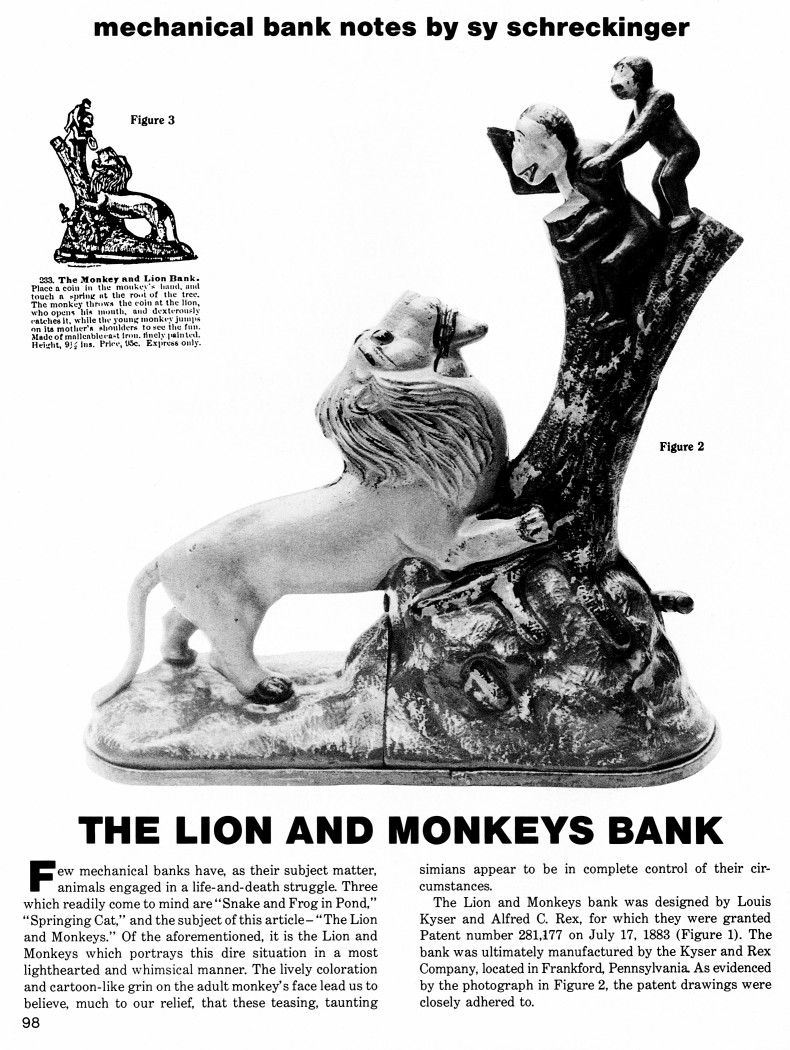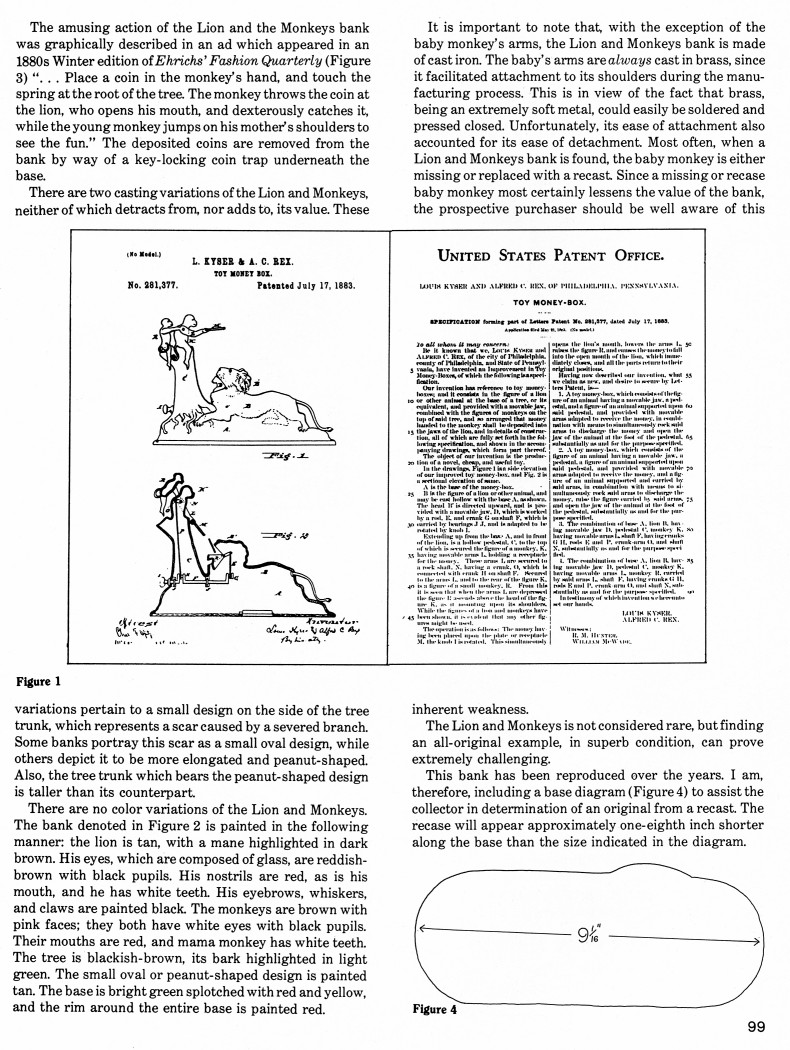|
The Lion and Monkeys
Bank
by Sy Schreckinger – ANTIQUE TOY WORLD Magazine – March, 1987
Few mechanical
banks have, as their subject matter, animals engaged in a life-and-death
struggle. Three which readily come to mind are "Snake and Frog in Pond,"
"Springing Cat," and the subject of this article – "The Lion and Monkeys."
Of the aforementioned, it is the Lion and Monkeys which portrays this dire
situation in a most lighthearted and whimsical manner. The lively
coloration and cartoon-like grin on the adult monkey's face lead us to
believe, much to our relief, that these teasing, taunting simians appear
to be in complete control of their circumstances.
The Lion and Monkeys bank was designed by Louis Kyser and Alfred C.
Rex, for which they were granted Patent number
281,177 (*see note below,
corrected to
281,377) on July 17, 1883
(Figure 1). The bank was ultimately manufactured by the Kyser and Rex
Company, located in Frankford, Pennsylvania. As evidenced by the
photograph in Figure 2, the patent drawings were closely adhered to.
The amusing action of the Lion and the Monkeys bank was graphically
described in an ad which appeared in an 1880s Winter edition of Ehrichs'
Fashion Quarterly (Figure 3) ". . . Place a coin in the monkey's hand, and
touch the spring at the root of the tree. The monkey throws the coin at
the lion, who opens his mouth, and dexterously catches it, while the young
monkey jumps on his mother's shoulders to see the fun." The deposited
coins are removed from the bank by way of a key-locking coin trap
underneath the base.
There are two casting variations of the Lion and Monkeys, neither of
which detracts from, nor adds to, its value. These variations pertain to a
small design on the side of the tree trunk, which represents a scar caused
by a severed branch. Some banks portray this scar as a small oval design,
while others depict it to be more elongated and peanut-shaped. Also, the
tree trunk which bears the peanut-shaped design is taller than its
counterpart.
There are no color variations of the Lion and Monkeys. The bank
denoted in Figure 2 is painted in the following manner: the lion is tan,
with a mane highlighted in dark brown. His eyes, which are composed of
glass, are reddish-brown with black pupils. His nostrils are red, as is
his mouth, and he has white teeth. His eyebrows, whiskers, and claws are
painted black. The monkeys are brown with pink faces; they both have white
eyes with black pupils. Their mouths are red, and mama monkey has white
teeth. The tree is blackish-brown, its bark highlighted in light green.
The small oval or peanut-shaped design is painted tan. The base is bright
green splotched with red and yellow, and the rim around the entire base is
painted red.
It is important to note that, with the exception of the baby monkey's
arms, the Lion and Monkeys bank is made of cast iron. The baby's arms are
always cast in brass, since it facilitated attachment to its shoulders
during the manufacturing process. This is in view of the fact that brass,
being an extremely soft metal, could easily be soldered and pressed
closed. Unfortunately, its ease of attachment also accounted for its ease
of detachment. Most often, when a Lion and Monkeys bank is found, the baby
monkey is either missing or replaced with a recast. Since a missing or
recast baby monkey most certainly lessens the value of the bank, the
prospective purchaser should be well aware of this inherent weakness.
The Lion and Monkeys is not considered rare, but finding an
all-original example, in superb condition, can prove extremely
challenging.
This bank has been reproduced over the years. I am, therefore, including a
base diagram (Figure 4) to assist the collector in determination of an
original from a recast. The recast will appear approximately one-eighth
inch shorter along the base than the size indicated in the diagram.
Note: (from
May, 1987) In the
March 1987 issue of Antique Toy World, article entitled,
"Lion and Monkeys Bank, " Patent number 281,177 was a typo error and
should have read, "Patent number
281,377."
|


